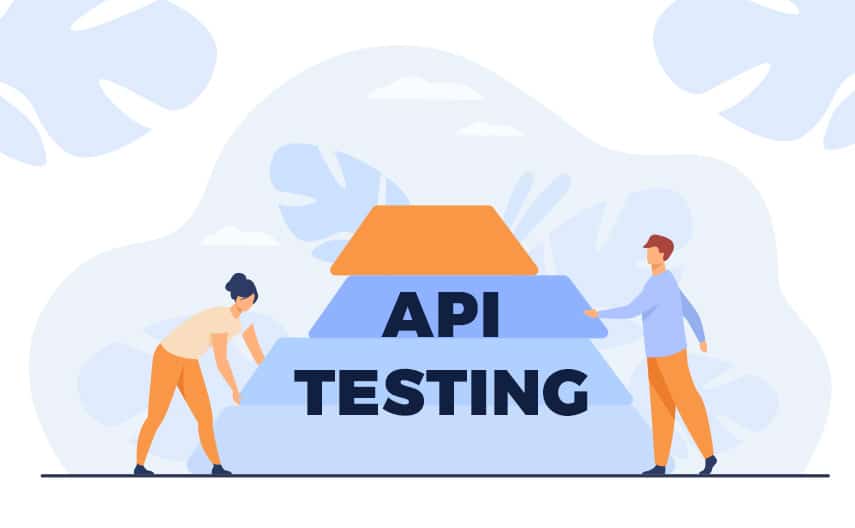API Testing: 10 Steps to Success

API testing can be defined as a type of software testing that involves testing application programming interfaces directly and as part of integration testing to determine if they meet expectations for functionality, reliability, performance, and security.
API usage has seen a massive upturn in adoption over the past 12 months, culminating in an increase in overall API traffic by 321% according to a recent survey. This increase in API adoption has led to the need for organizations to lay more emphasis on API testing as this not only ensures security, reliability, performance and functionality expectations are met but also aids in compliance and all round makes the entire DevOps process easier.
Why Test APIs?
Aside from ensuring the expectations of functionality, reliability, performance and security are met, other advantages of API testing are:
- Enhances API quality utilizing testing APIs early in the DevOps lifecycle which ultimately aids in the early discovery of potential bugs.
- Checks API performance through tests which evaluate how APIs integrate not just with other applications, but also with other APIs. This is particularly advantageous in finding bugs in code.
- Supports the agile methodology by ensuring that network communication and endpoints are properly checked and covered.
- Increases speed and coverage – API testing can help shorten other types of tests needed to be run during the development process. Thus aiding in the earlier discovery of bugs which can be fixed immediately.
- Enables faster software releases – API testing helps FastTrack the software development process, especially if it is integrated earlier enough in the Software development process. This helps shorten the time required to potentially test software post-coding phase.
Types of API Testing
API testing is aimed at not just analysing API responses from Requests between two applications or two APIs, it is also aimed at testing API performances under different criteria and testing several potential vulnerabilities. The different ways APIs can be tested are:
- End-to-End Testing – Simply put, this test helps developers and security professionals understand the flow of data and information between different API connections.
- Performance Testing – performance testing often checks how an API acts when fed with huge amounts of data. This is often called a load test and it is done for APIs designed to serve thousands of requests per minute or hour. Performance testing helps developers benchmark the performance, peak loads and breaking points of APIs.
- Security Testing = Security Testing is aimed at understanding how safe an API is, what APIs are vulnerable and which can become easy access points for malicious attackers. It is important that security testing is done by cybersecurity professionals.
- Unit Testing – Unit testing of APIs is the tests designed to run automatically each time a new build of an application is deployed. It is automated testing that is meant to ensure that APIs remain safe from the very first build of an application to the last during the DevOps lifecycle.
- Runtime error testing – This is a type of API testing meant to ensure that your API reports back any errors that occur during its usage. This is a good way to aid in the troubleshooting of errors.
- Fuzz Testing – During a fuzz test, random data is sent using APIs to endpoints. The idea is to observe the outcome of the fuzz and the behaviour of the server or application to the random data being sent. This can potentially aid in the defence against injection attacks.
- Validation Testing = Validation tests are integrity tests used to check if the software meets the business requirements. This is done by matching the expected results of test execution with the required test plan.
How to go about testing your APIs
When testing APIs, the following steps should be taken:
- Understand and define the API requirements –The first step is to understand and define the requirements for the API. This would be a collective effort of the various teams within an organization. The goal is to answer questions in line with; What the API would be used for; the pass and fail criteria for the API; how the API would interact with other APIs; how the application would handle data; how the system would handle failure and output; and how the system handles unexpected inputs. Drafting API testing documentation is also important in this stage.
- The second step is to create a lab environment where all the API testing would be done. Typically, a staging server and/or a beta version of an application would be used.
- The third is to review the documentation from the first step. This is often called a static API test as the policies in the documentation are not getting executed.
- Next is to create a Proof of Concept for all API calls to be executed and subsequently set all of them in a script to run.
- Following the step directly above is a fuzz and other API test types.
- Afterwards, all APIs should be integrated into the full environment and executed on end-to-end test scenarios.
- Execution results are then tested to check if they match the stipulated requirements.
- The next stage would be to implement any fixes required.
- User Acceptance Testing is then done with bugs fixed if they occur.
- If all requirements are met at this stage, the documentation from the first stage is amended and delivered to the necessary officials within an organization before a sanity check on production is done on the software before it is released to the general public. Lastly, production releases should be followed up on in case there are any potential issues.
Conclusion
API testing remains a key aspect of the overall DevOps lifecycle. While it is often overlooked or not done properly, it is important to continuously adopt the right policies and procedures to test APIs. This not only ensures that APIs meet the right standards for functionality, reliability, performance, and security, but it also ensures that API quality is enhanced which in turn helps push out software faster.
About the Author:

Musa is a certified Cybersecurity Analyst and Technical writer. He has experience working as a Security Operations Center (SOC) Analyst and Cyber Threat Intelligence Analyst (CTI) with a history of writing relevant cybersecurity content for organizations and spreading best security practices. He is a regular writer at Bora.
His other interests are Aviation, History, DevOps with Web3 and DevSecOps. In his free time, he enjoys burying himself in a book, watching anime, aviation documentaries and sports, and playing video games.





